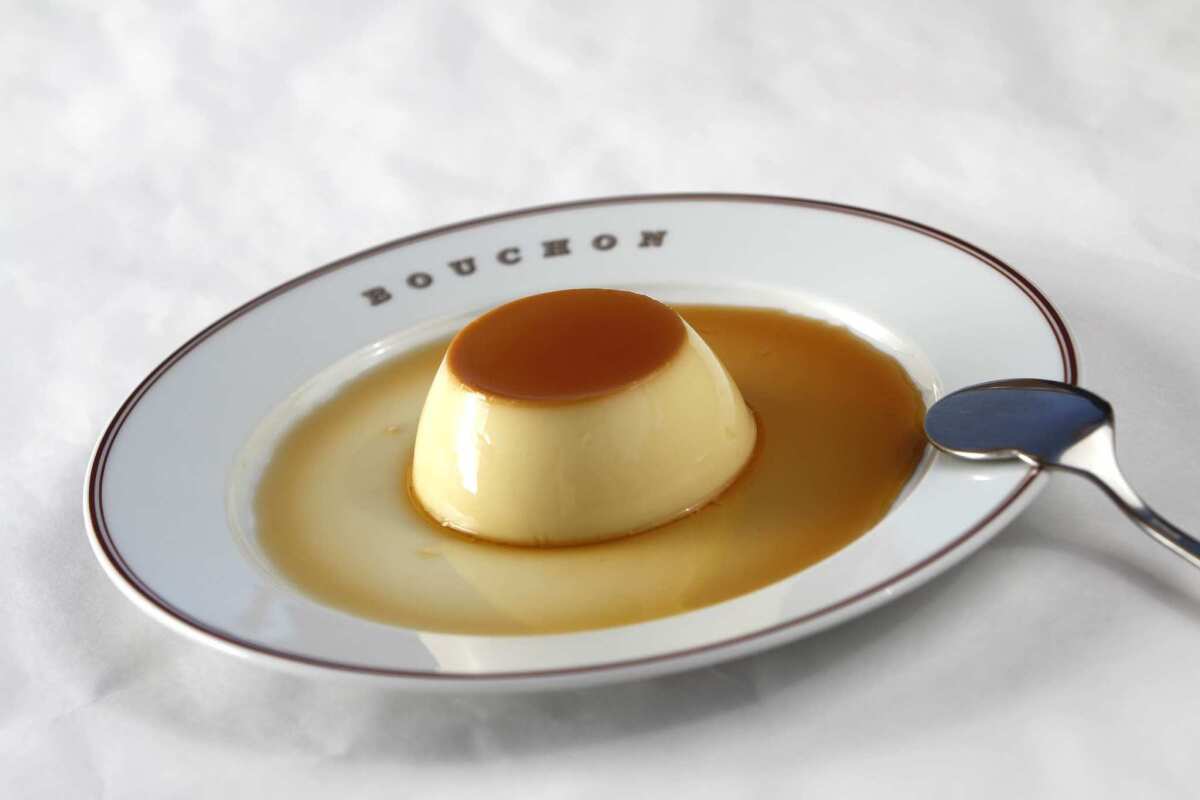Recipe: Crème caramel

Crème caramel
Total time: 1½ hours, plus cooling and chilling times
Servings: 8
Note: Adapted from Thomas Keller’s Bouchon. This recipe calls for 8 (7- to 8-ounce) crème caramel cups or ramekins.
Caramel
1/2 cup plus 1 tablespoon sugar
3 tablespoons light corn syrup
3 tablespoons water
1. Arrange 8 (7- to 8-ounce) crème caramel cups or ramekins in a baking pan lined with a piece of parchment paper and set near the stove.
2. Combine the sugar, corn syrup and water in a very clean, small nonstick saucepan and stir to combine (the corn syrup will help keep the caramel from crystallizing). Bring to a simmer over medium heat, stirring constantly with a heat-proof spoon or spatula. Continue to simmer and stir until the caramel is a rich, deep amber, about 13 minutes. If any sugar crystallizes on the side of the pan, brush the sugar down with a pastry brush that has been dipped in water. If the caramel begins to foam or browns too quickly, move it off the heat briefly to let it rest and allow you to regain control.
3. Remove the caramel from the heat. Pour some of the caramel into the bottoms of two of the cups and immediately rotate them to coat the bottoms evenly with a thin layer of caramel. (If you don’t work fast, the caramel may solidify too quickly.) Coat the remaining cups two at a time; if the caramel in the saucepan gets too thick, place it over low heat to remelt. (The caramel cups can be held at room temperature for 2 days; cover the cups with plastic wrap.)
Custard
4 cups milk
1 1/4 cups plus 3 tablespoons sugar
5 eggs
3 egg yolks
2 1/4 teaspoons pure vanilla extract
1. Combine the milk and sugar in a medium nonreactive saucepan and bring just barely to a simmer over medium heat, stirring to dissolve the sugar. Remove from the heat and set aside to cool until just warm to the touch.
2. Whisk the eggs and yolks in a large bowl to combine. Whisking constantly, slowly add the warm milk mixture and then the vanilla. Strain into a pitcher or large measuring cup with a spout and refrigerate for a day, ideally, or proceed with the recipe.
3. Put a rack in the middle of the oven and heat it to 300 degrees.
4. Place the prepared crème caramel cups in a baking pan on a baking sheet. This will provide a double layer of insulation so the custards cook slowly and evenly. Pour about three-fourths cup of custard into each cup. Add enough very hot tap water to the baking pan to come halfway to two-thirds of the way up the sides of the cups. Use a wooden skewer to burst any bubbles on the tops of the custards so the tops will be smooth.
5. Cover the baking pan with two layers of plastic wrap, sealing it tightly, and place in the oven. Begin to check the custards after 30 minutes. Gently shake them (still in the plastic wrap): The custard should be set but still jiggle slightly, like gelatin. It will probably take 40 minutes for the custards to set, or longer if the mixture was cold when it went into the oven.
6. Remove the baked custards from the hot water and place them on a cooling rack. Cool, then refrigerate for at least 24 hours. (The custards can be refrigerated for as long as 3 days.)
7. To serve: Pour about 2 inches of very hot water into a bowl. Set a crème caramel cup in the hot water to let the caramel soften for a few seconds, then run a paring knife around the edge of the cup to loosen the custard. Invert onto a serving plate. If the custard sticks, hold the cup firmly against the plate and shake to loosen the custard. Repeat with the remaining custards.
Each serving: 361 calories; 9 grams protein; 63 grams carbohydrates; 0 fiber; 9 grams fat; 4 grams saturated fat; 198 mg cholesterol; 59 grams sugar; 106 mg sodium.
More to Read
Eat your way across L.A.
Get our weekly Tasting Notes newsletter for reviews, news and more.
You may occasionally receive promotional content from the Los Angeles Times.







